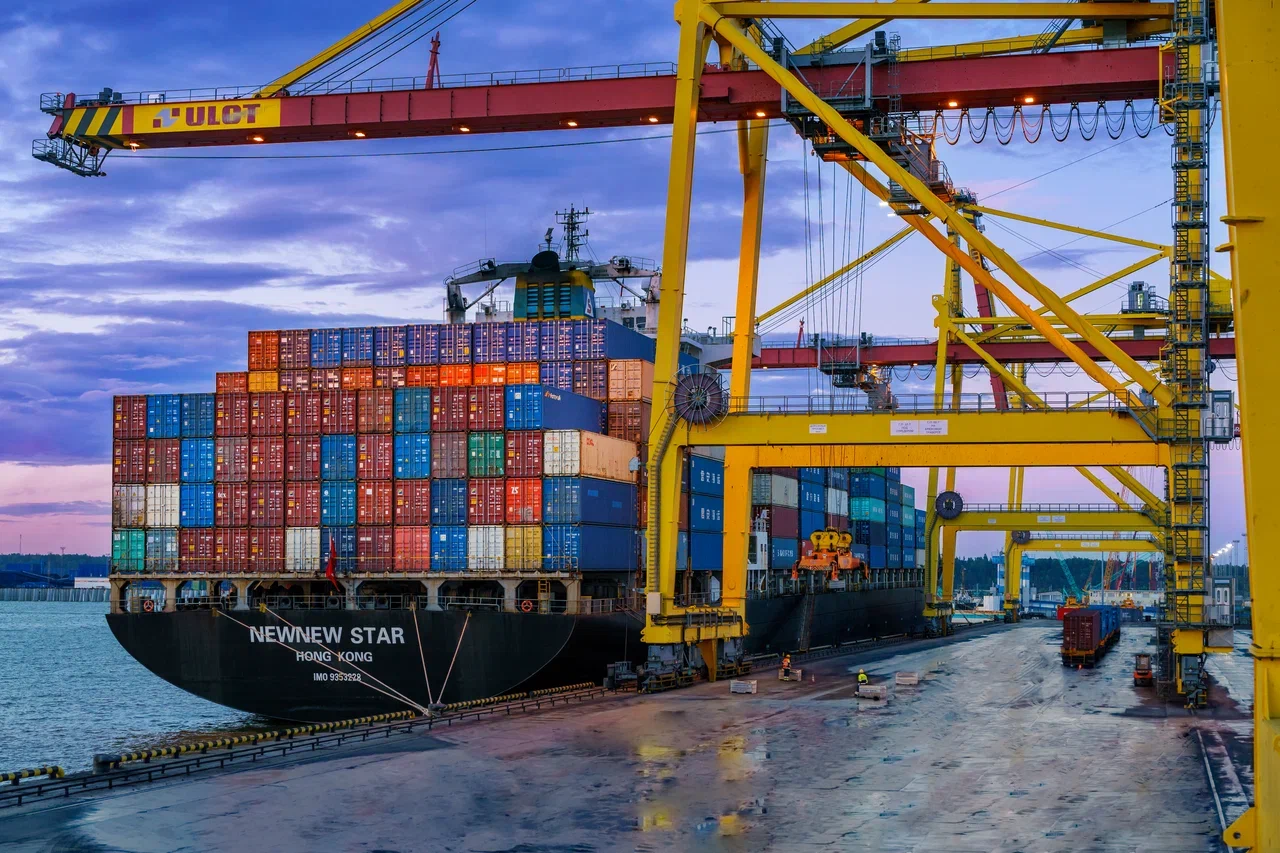
News
28 June 2024
ULCT Handles First Vessel Call of Newnew Shipping Container Line
 Ust-Luga Container Terminal (ULCT, owned and managed by Global Ports marine terminal operator, part of Delo Group) handled the first call of NewNew Star containership of Hainan Yangpu NewNew Shipping Co container line.
Ust-Luga Container Terminal (ULCT, owned and managed by Global Ports marine terminal operator, part of Delo Group) handled the first call of NewNew Star containership of Hainan Yangpu NewNew Shipping Co container line. ULCT loaded on board of the vessel more than 400 FFE with export timber goods: plywood, veneer, sawn timber. The ports of discharge include Alexandria in Egypt and the ports in China: Tianjin, Qingdao, Shanghai and Nansha (Guangzhou).
NewNew Star containership has a capacity of 3,534 TEU. When fully loaded, its draft exceeds the permissible draught for the water area of the Big Port of St. Petersburg. Therefore, loading was carried out in two stages: the main part of the cargo was loaded at the First Container Terminal (FCT, also part of Global Ports) in St. Petersburg. Another 412 containers were additionally loaded at ULCT at the deep-water port of Ust-Luga. Unlike St. Petersburg terminals constricted to the depth limit of the navigable sea channel, ULCT can handle large vessels with a draft of over 12 metres.
Container handling in the Russian Baltic Basin in Q1 2024 increased by 97% to 409 thousand TEU. At the same time, the consolidated container throughput of Global Ports terminals in the North-West increased 10 times to 155 thousand TEU in the first quarter. Against the backdrop of the growing direct maritime services between St. Petersburg and ports of Asia-Pacific countries, the market in the region is demonstrating demand for increased vessel capacity. In 2024, every fourth containership calling at the ports of St. Petersburg and Ust-Luga has had a capacity of 3,000 TEU or more.
ULCT is one of the most modern marine cargo terminals in Russia and can handle all types of containers and all classes of hazardous cargo. The infrastructure and land area of the terminal allows the terminal to quickly increase the yard and railway front capacities. The port of Ust-Luga is served by one of the largest and most modern port stations of the Oktyabrskaya railway, Luzhskaya railway station. Thus, the marine terminal has direct access to the railway network, bypassing the busy St. Petersburg railway hub, which allows the port to optimise the chain of logistics and reduce delivery time. < Back to list